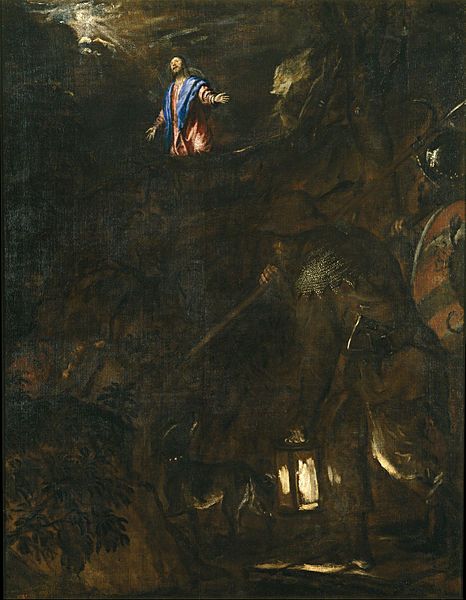The First Part of the Rosary, Meditation (Leo, the Rosary, and Christian Unity, part 3 of 10)
Oct 11th, 2014 | By Beth Turner | Category: Blog Posts, Catholic Life and DevotionThis is the third in a ten part guest series by Beth Turner, the wife of Barrett Turner. Beth and Barrett were received into full communion at Easter 2010 and live in Virginia with their four children. Beth’s story of her journey into the Catholic Church can be found at Saved by Love: A Seminary Wife’s Journey.
The First Part of the Holy Rosary: Meditation
The First Sorrowful Mystery, the Agony in the Garden of Gethsemane
“For every time we devoutly say the Rosary in supplication before her, we are once more brought face to face with the marvel of our salvation; we watch the mysteries of our Redemption as though they were unfolding before our eyes; and as one follows another, Mary stands revealed at once as God’s Mother and our Mother.” (Adiutricem 25)
Pope Leo XIII describes two fundamental parts to the praying of the holy Rosary: meditation upon the mysteries of Christ’s life, and vocal prayer. For Protestants who are unfamiliar with the basic form of the Rosary, I would highly recommend a look at Fred Noltie’s post, Ad Jesum per Mariam: The Rosary Is Christ-Centered. This post describes the content of the prayer so I do not have to repeat it here.
As a Protestant, I hardly knew anything about the Rosary except cynical jokes at the expense of the old, anxious women who were apparently the only ones who prayed it. I didn’t know that there was a meditative part to the Rosary. I was surprised and pleased to discover how much it directed my attention to events right out of the text of the Holy Scriptures. Stopping to think about Christ’s crucifixion, two times every week, for however long it took to pray one decade, was quite a bit more time thinking about any event in Christ’s life than I spent before.
Pope Leo XIII describes the mysteries as being arranged in an “orderly pattern” and “brought before our mind for contemplation” (Magnae Dei Matris 16). He notes that these mysteries “are proposed less as truths or doctrines to be speculated upon than as present facts to be seen and perceived” (Iucunda Semper Expectatione 8). This last observation makes it possible for even those who are not well-educated in the finer points of Church doctrine to pray the Rosary. The “facts” presented in the Rosary are a meditation which Protestants can make, too. Asking questions about doctrine can be done after contemplating the facts of Christ’s life.
Part 2 of this series is available here.


